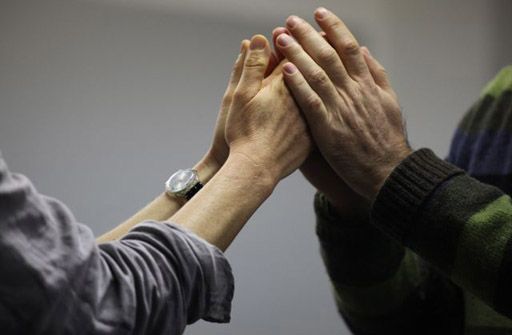
Discussion Guide: Empathy, Connection, and Global Health and Wealth in the Wake of Covid
There is a moment at the start of every major crisis when we think: “This is going to change everything.” COVID-19 was no exception. But as the crisis born of this global pandemic evolved, some of the hopes and promises of significant transformation in the humanitarian aid sector that have long resisted change, have remained obdurate.
The drivers of humanitarian needs are changing. New threats like climate change, prolonged conflicts, and a geopolitical landscape that makes the resolution of crises at the international level more complex.
The impacts of humanitarian crises are changing too, becoming more global in their repercussions. Traditional forms of humanitarian intervention are no longer working; new approaches and players are emerging to fill an increasing gap between needs and response.
Tackling the world’s crises is no longer the exclusive domain of governments, “Big Aid” and the United Nations — nor is it only about disaster relief and aid delivery. In many ways, the whole conception of humanitarianism is changing, evidenced by the private sector’s response to refugees; high school students marching for climate change; and local communities reclaiming agency in shaping their own futures.
Today, a new generation of humanitarians is redefining the way the world responds to crises – demanding a seat at the table and a voice in the conversation.
Recent analysis warns that long-promised reforms are coming too slowly to a humanitarian sector that’s struggling to keep pace with soaring needs and costs.
Our downloadable guide is divided into three focus areas for discussion: empathy and connection, income equality, and global sustainability. Links to science-based information from the Human Journey website and other sources are included with each focus area to help participants prepare for meaningful, informed dialogue.
LATEST UPDATES: Humanitarian Funding Is Up, but Relief Shortfalls Persist
The following overview is extracted from The New Humanitarian, a source for original on-the-ground reporting and expert analysis of humanitarian crises and the trends that shape them. The article offers several key takeaways from the latest State of the Humanitarian System report issued by ALNAP, a UK-based research and learning network. Read the full ALNAP report here.
Relief reaches less than 50% of the people targeted, even though humanitarian funding nearly doubled over the last decade, to more than $31.3 billion last year.
The system needs transformation, not tinkering at the edges – and this will only happen if there is adequate investment in different and better ways of working.
Only a minority of people who use aid reported that it met their needs – and this proportion is falling as more and more people become dependent on aid.
This is partly due to the extreme scale of humanitarian needs driven by conflict, COVID-19, and the climate crisis. But the humanitarian system is still “highly resistant to change”, as seen by years of unfulfilled pledges to make aid more local, accountable, or collaborative.
Several humanitarian networks said in a statement responding to the report: “The system needs transformation, not tinkering at the edges – and this will only happen if there is adequate investment in different and better ways of working.”
Here are a few takeaways from the 2018-2021 assessment of the international humanitarian system:
When the pressure rises, humanitarians keep quiet
Aid access is growing more complex in conflicts, and humanitarians are often choosing to stay silent to maintain what they have. “Fear of expulsion had a chilling effect on the sector’s collective willingness to speak out about abuses of civilians and blocks on aid,” the report said.
People who use aid are still waiting to be heard
How well does the humanitarian sector listen to people who rely on it? Only a third of people who use aid said they were even consulted or contributed feedback.
Women are rising to leadership positions … but national staff are not
More women are reaching the top ranks of the international humanitarian system, the statistics suggest.
But it’s a different picture when it comes to leadership in country capitals or at headquarters.
In one small survey, less than one fifth of country director jobs were held by citizens of that country. And a separate survey found that people from countries receiving aid comprised less than 20 percent of INGO boards. Only two percent had any experience living as a refugee or in a humanitarian crisis environment.
The sector is still growing, even if money is stretched…
The humanitarian system is ballooning in cost, size, and scope, but funding is even more concentrated in the hands of a few donors, countries, and aid groups.
The number of aid groups has grown by about 10 percent over a decade: There are now some 5,000 humanitarian agencies, according to UK-based research outfit Humanitarian Outcomes.
And the aid sector now includes at least 630,000 staff – a 40-percent jump since 2013.
… but not all shortfalls are created equal…
Yes, the humanitarian donor financing system is overstretched and unsustainable. But it’s also heavily concentrated in a few responses and in a handful of aid agencies.
Some 40 percent of international humanitarian assistance last year went to responses in just five countries: Afghanistan, Ethiopia, South Sudan, Syria, and Yemen.
“Focusing on the international humanitarian system to understand how people survive and recover from a crisis,” the researchers said, “is akin to viewing a large landscape through a pin-sized hole.”
If some crises saw big aid pledges, others were sidelined. A COVID-19 appeal for Nepal, for example, was only 9-percent funded – jeopardising programmes in the middle of a coronavirus wave that had already overwhelmed neighbouring India.
Meanwhile, half of international assistance went to just three UN agencies: the World Food Programme, the UN’s refugee agency, and UNICEF.
… and there’s no quick fix
Deep-pocketed multilateral banks, and others typically focused on longer-term development, aren’t riding to the rescue. If there is a solution, then it may come from a combination of sources – including those outside the traditional humanitarian system and its stable of (mostly Western) donor governments.
International aid, the report notes, is just one way in which people in crises get help.
Survivor-led networks, direct diaspora aid, pop-up volunteer groups, faith groups, and the private sector already play sizeable roles – but they’re often discounted, undervalued, or simply ignored by traditional humanitarians.
“Focusing on the international humanitarian system to understand how people survive and recover from a crisis,” the researchers said, “is akin to viewing a large landscape through a pin-sized hole.”
LATEST UPDATES: How the Pandemic Is Changing Our World
The following information is extracted from information published by DEVEX, a social enterprise and media platform for the global development community. It provides an overview of the challenges, commitment and progress of multiple institutions, communities and countries.
WATCH: How Rwanda Got Ahead of the Pandemic Curve
Agnes Binagwaho, Vice Chancellor of the University of Global Health Equity, interviewed by Raj Kumar, Founder of DEVEX
“The major lesson to take out of this outbreak is that it is only through solidarity that humanity can make it.”
Expertise is all over the world and can be shared all over the world. In this kitchen-table interview with Devex founder Raj Kumar, Dr. Binagwaho describes how Rwanda got ahead of the pandemic curve, proving that success is possible outside of the western world. She reminds us that outbreaks are predictable, but pandemics are not. Pandemics are the failure of managing an outbreak, and when a country does not manage an outbreak, we are all at risk. Now that we’ve all learned that we can work from home, Dr. Binagwaho hopes that we will travel less and avoid contributing to global warming. E-learning should be emphasized making learning accessible to more people around the world. Health sectors need to be human-centric providing services to all members of society equally. Read more at Opinion: COVID-19 – The anatomy of community-centered response.

As the UN Celebrates its 75th Birthday, September 21, 2020…
In the UN’s public review of how it needs to update its work, some 90 to 95% of over one million people participating worldwide say that international cooperation is needed and is currently insufficient. New initiatives, including new pledges such as better pandemic preparedness must come into play. The majority of respondents also want the United Nations to change and innovate, becoming more transparent, accountable, and effective. The big question is, “Whether we will build on the common ground, or focus so much on our differences as opposed to really boosting what we agree on. I think that is the challenge ahead,’’ Undersecretary-General Fabrizio Hochschild told Devex. “We need international cooperation, but we need to do better, we need to modernize it, we need to reinvigorate it, we cannot go back to business as it was before.”
Obstacles to Modernization
“The biggest obstacles to changing and taking forward the UN75 Political Declaration’s commitments in meaningful ways is, undoubtedly, the rise of exclusive forms of nationalism that corrode the essence of multilateral cooperation,” says Richard Ponzio, director and senior fellow at the Washington-Based think-tank Stimson Center, identifying the threats of vaccine nationalism and a global downturn in the economy.
“The dark picture is that we rarely see multilateral institutions being so contested. We have a deep contestation of the WHO, immense sparring between U.S. and China, and the P5. That is all negative and is not playing into a showing of the 75th anniversary,” says Sarah Cliffe, director of New York University’s Center on International Cooperation.
Post COVID Changes to International Aid
Aid professionals predict that in the COVID and post-COVID world, humanitarian aid will have to rely much more on local expertise. In the long-term this will be good for the environment and good for the countries, since local knowledge provides the best solutions. Operations will be very much more result oriented: Where does each dollar go? There is likely to be less funds available internationally as countries face their own health and financial problems. Much more emphasis will be given to E-learning and online communication.
COVID Lays Bare the Global Digital Divide
If we are to come out of this stronger than before, we need to use technology and data science to meaningfully advance financial security and economic mobility. The multiple impacts of the COVID pandemic exacerbate the unequal access to digital services, and will increasingly threaten the survival of countries and communities who remain offline.
Digital Education
The technology sector must introduce new courses to help students build computer literacy, and the skills they need to succeed in an increasingly digital economy, including coding for kids and entrepreneurship.
Digital Healthcare
An important question for telehealth, as well as other digitally enabled essential services that have seen a surge in usage over the past six months, is how to build on the momentum of COVID-19 in a way that includes the hardest to reach. “COVID-19 has brought into stark relief the need to accelerate digitization of economies in ways that are inclusive of all people, everywhere,” says Parag Mehta, executive director and senior vice president of the Mastercard Center for Inclusive Growth.
USAID’s New Digital Strategy Aims to Strengthen an Open, Secure, and Inclusive Future
As the global development community works to deliver lifesaving assistance and relay crucial information in the midst of the coronavirus pandemic, the critical role of digital technology is undeniable. The U.S. Agency for International Development is working with governments and the private sector to close the digital gap.
What are the Opportunities COVID-19 Creates for the Humanitarian Sector?
For the humanitarian sector, COVID-19 provides a range of challenges. Bringing in international support after a disaster could be impossible due to travel restrictions or create the risk of staff infecting local communities with the new coronavirus. Supply chains may be heavily affected — including the ability to procure and deliver medical supplies needed in response to a disaster.
But at the same time, a new paper from the Humanitarian Advisory Group highlights the opportunities that are presented, as localization and empowerment of local leadership are expected to be sped up.
What Does a COVID-19 Response Look Like with Limited Water?
People living in densely populated settings — including urban areas, refugee and internally displaced people camps, and prisons — are especially vulnerable, say WASH (Water, Sanitation, and Health) sector experts. According to Anjali Mahendra, director of research at the World Resources Institute Ross Center For Sustainable Cities, in many of these places, people rely on community facilities, such as shared water points and communal toilets, and are dependent on private vendors and tanker trucks rather than water piped in from a water utility. Even when there is access to water, it is often intermittent and only available a few hours per day, Mahendra said. “How does the hand-washing standard, with the need this pandemic requires, get fulfilled in a context like this?” she asked.
3 Billion People Lack Basic Hand-Washing Facilities in Their Homes
Closure of Europe and high-income countries in peacetime may be unprecedented, but the war against preventable diseases such as COVID-19, cholera, polio, measles, and Ebola has long been raging for the 3 billion people who lack basic hand-washing facilities in their homes.
New UNESCO Report Shows COVID-19 Leaving Vulnerable Children Behind
Progress is slowing on the global out-of-school rate for primary and secondary school-age children, and COVID-19 will only make it worse. According to the report, an estimated 258 million children are out of school. And 97 million of these are in sub-Saharan Africa, and that number is growing. This means that by 2050, more than one in 10 adults in the region will not have completed primary education.
If the US Backs Out, the Gates Foundation’s Will Become Largest WHO Donor
If the United States government withdraws from the World Health Organization, the Bill & Melinda Gates Foundation is poised to become the agency’s top donor. The potential of this change is raising questions about what such influence from a single private foundation could mean. WHO’s list of top 20 donors for the two-year budget cycle of 2018 and 2019 reveals that the U.S. provided the agency with $893 million, accounting for 20% of WHO’s budget, whereas the Gates foundation contributed $531 million, or 12% of WHO’s budget. The Gates foundation accounts for 45% of WHO’s funding from nongovernmental entities, according to figures provided to Devex from WHO. That pool of donors may expand and diversify with the recent launch of the WHO Foundation. But even as WHO ramps up fundraising from nongovernmental entities, support from its member states remains crucial because of the dollars they provide — and because they are accountable to their citizens, experts tell Devex.
Food Security and COVID-19
Food insecurity is one of the most significant aftershocks of the COVID-19 pandemic, affecting millions of people. An already bleak global food security picture will be compounded as the repercussions of the COVID-19 pandemic destroy livelihoods, disrupt supply chains, strain national budgets, and restrict trade, the Global Network Against Food Crises has warned. It calculated that 135 million people in 55 countries and territories were suffering from acute food insecurity. That number could double as another 130 million are impacted by the pandemic, World Food Programme Executive Director David Beasley told the U.N. Security Council.
“At the same time while we’re dealing with [the] COVID-19 pandemic, we’re also on the brink of a hunger pandemic.”
Without taking into account the impact of the new virus, 2020 was already expected to be the worst year for food crises since 2017, when the Global Network Against Food Crises conducted its first analysis. The alliance of humanitarian and development organizations — founded in 2016 by WFP, the Food and Agriculture Organization, and the European Commission for International Cooperation and Development — promotes a data-driven approach to coordination and implementation to prevent food crises.
The 135 million people already experiencing acute food insecurity have no ability to cope with the additional shock of the pandemic, the report found. With 15.9 million people in food crises last year, Yemen was projected to remain the world’s worst food crisis in 2020. Conflict also drives food insecurity in the Democratic Republic of the Congo and Afghanistan, which have the second- and third-highest numbers of people in food crises, respectively.
South Africa Will Begin the First Clinical Trial on the African Continent of a Vaccine for the Novel Coronavirus
The University of the Witwatersrand, Johannesburg, is collaborating with the University of Oxford and the Oxford Vaccine Group to expand a trial of the Ox1Cov-19 vaccine, which is already underway in the U.K., to an additional group of participants in South Africa. “This is a landmark moment for South Africa and Africa at this stage of the Covid-19 pandemic. As we enter winter in South Africa and pressure increases on public hospitals, now more than ever we need a vaccine to prevent infection by Covid-19,” said Shabir Madhi, a professor of vaccinology at Wits University who is leading the trial. As of June 24, South Africa had confirmed 111,796 cases of COVID-19, representing about a third of the continent’s cases.
Oxfam International Plans to End its Presence in 18 Countries
Some 1,450 staff will be cut as part of a strategic reform effort accelerated by the financing impacts of the coronavirus pandemic. The organization is shutting down country offices in Thailand, Afghanistan, Sri Lanka, Pakistan, Tajikistan, Haiti, Dominican Republic, Cuba, Paraguay, Egypt, Tanzania, Sudan, Burundi, Rwanda, Sierra Leone, Benin, Liberia, and Mauritania. It has worked in some of those countries for more than 50 years. “We’ve been planning this for some time but we are now accelerating key decisions in light of the effects of the global pandemic,” said Chema Vera, Oxfam International’s interim executive director.
Women Bear the Burden
New research by Oxfam and partners reveals that while COVID-19 and the related containment efforts have caused increases in women’s – and men’s – unpaid care workloads, women are still doing the bulk of this work. Women living in poverty, single mothers and essential workers as well as those belonging to minority racial and ethnic groups are being pushed furthest to the margins. It shows the real consequences this has for the health, economic security and wellbeing of these women and their families. Women report feeling more anxious, depressed, overworked or ill because of their increased unpaid care work. Care work is essential to the healthy functioning of our societies and economies and must be better supported through policy and social norms change. Care work must be at the heart of a feminist COVID-19 recovery.
Oxfam Briefing paper
As the situation evolves, we’ll be adding new resource material to support your discussions. Sign up now for email updates.
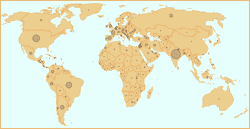
Track the Spread
Goats and Soda, NPR
Track the spread of the coronavirus globally and state-by-state with these regularly updated maps.
Coronavirus World Map
Covid-19 in the US

Watch: Supporting Our World at this Time of Need
Philip Zimbardo, PhD, Palo Alto University
Watch: In this 90 minute webinar, renowned psychologist Phil Zimbardo takes us on a journey of exploration and introspection for these complex times of global pandemic and social injustice. He reviews the psychologies of evil and heroism, with old and new faces, and introduces the new “Zimbardo Systemic Engagement” program as a framework for positive response.

Watch: Ethics & Race in Tech
Ruha Benjamin in conversation with Meredith Whittaker, City Arts and Lectures
Benjamin and Whittaker exemplify the kind of discussion we need to imagine and create the world we want. They caution against the expectation that technology will provide a “magic bullet” to right the social fissures underlying the current challenges.
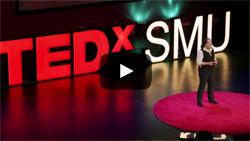
Watch: Coronavirus Is Our Future
Alanna Shaikh, TEDx
Global health expert Alanna Shaikh talks about the nCov coronavirus outbreak and what this can teach us about the epidemics yet to come.
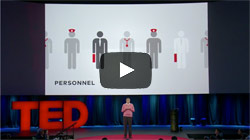
Watch: The Next Outbreak? We’re Not Ready
Bill Gates, TED
In 2014, the world avoided a global outbreak of Ebola, thanks to thousands of selfless health workers — plus, frankly, some very good luck. In hindsight, we know what we should have done better. Now’s the time to put all our good ideas into practice, from scenario planning to vaccine research to health worker training.
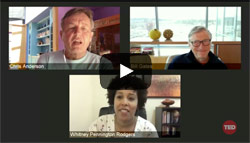
Watch: How We must Respond to the Coronavirus Pandemic
Bill Gates, Chris Anderson & Whitney Pennington Rogers, TED
Bill Gates offers insights into the COVID-19 pandemic, discussing why testing and self-isolation are essential, which medical advancements show promise and what it will take for the world to endure this crisis.
